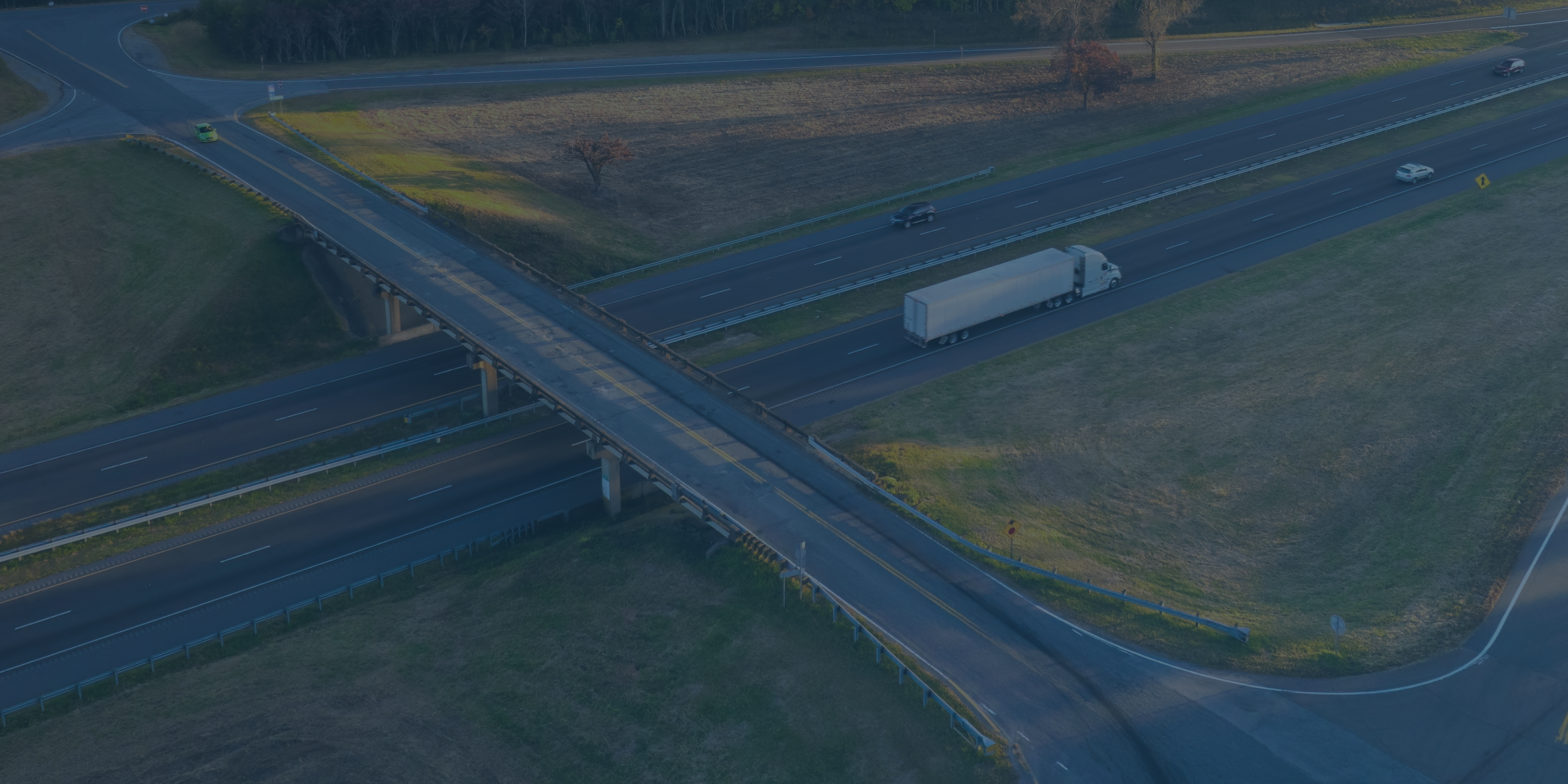
Telematics isn’t something new to the auto insurance industry. However, it has gained traction in the commercial auto insurance market in recent years. What is telematics in insurance? Here are two things to know:
- Telematics is technology that fleets use to improve operational and safety performance by monitoring a vehicle or driver’s actions on the road. Think of it like a fitness tracker—but for driving.
- Telematics in insurance describes how commercial auto insurers use telematics and camera data to improve underwriting workflows and assess policyholders' risk profiles throughout the policy lifecycle.
In this article, we’ll expand on the usage of telematics across fleets, how telematics affects the commercial auto insurance industry and the benefits of telematics for insurers.
Here are four things to know.
1. What Is Telematics in Auto Insurance?
Commercial auto insurance, to be specific.
As some of the earliest adopters of telematics, trucking companies and fleets have traditionally utilized this technology in several different ways, including:
- Helping optimize trucking routes
- Triggering customized training alerts
- Monitoring fuel costs
- Scheduling maintenance
While commercial auto insurance still relies on historical data, driver records and general risk factors to determine premiums, telematics innovation has opened the door to even more granular data on driver risk.
Today, innovative telematics systems can monitor driver behavior and bring contextualized data to commercial auto insurance teams, who assess and price risk for their fleet customers.
Some of these monitored driving behaviors include:
- Acceleration patterns and speeding
- Braking habits (or hard braking)
- Cornering
- Distracted driving
With a new, continuous data source to leverage, insurers have a unique opportunity to utilize telematics that can provide tangible value.
2. The Benefits of Telematics in Commercial Auto Insurance
But for commercial auto, it’s not an easy concept to implement. Why? It works behind the scenes, generating billions of data points on driver behavior. It can be overwhelming to understand the context behind each event type.
Telematics data can be a game-changer for commercial auto insurers, who are actively looking for solutions to assess risk and price premiums more accurately.
It can provide a comprehensive risk profile that goes beyond traditional Risk Control methods. According to the SambaSafety 2024 Telematics Report, 72% of fleets report reduced crashes and claims after implementing telematics and training programs—closing visibility gaps.
A continuous look into driver behavior and data can also help underwriters price policies more accurately at bind and renewal, optimizing an insurer’s ability to overcome the hurdle of ongoing loss costs.
And while the ability to better price risk is a prominent benefit of telematics in commercial auto insurance, some other noteworthy benefits include:
- Enhanced driver safety and accident prevention
- Faster claim processing and better outcomes
- Usage-based insurance (UBI) adoption
- Driver performance insight and training
Lastly, telematics offers insurers the benefit of making informed, data-driven decisions about risk management based on comprehensive data rather than guesswork or assumptions.
3. How Telematics Affects Commercial Auto Insurance
Outside of the mentioned benefits of telematics or how telematics applies to commercial auto insurance, telematics has ripple effects that can’t be overlooked—specifically as it relates to Risk Control and insurers’ relationships with their policyholders.
With telematics data, risk management takes a more proactive approach than a reactive one. It allows insurers to identify, flag and support policyholders who are working to manage their risk. Today, the relationship between insurers and policyholders has evolved into a collaborative, consultative partnership that is focused on reducing driver risk on the road.
Insurers now play a key role outside of pricing policies as trusted advisors who can deepen their consultancy with an added layer of insight into real-time data. Risk Control teams benefit policyholders by:
- Proactively identify risks that address patterns before they result in a claim.
- Focusing on targeted intervention that guides resources to the highest-risk behaviors and drivers
- Offering continuous monitoring that gives fleet leadership and insurers a real-time assessment rather than periodic reviews
Telematics opens the door for insurers to leverage data that can bring meaningful value to fleet owners. With 51% of fleets adding new telematics devices or providers in 2025, there’s an increased opportunity to build the relationship between insurers and policyholders to reduce risk, improve safety and lower costs through data-driven insights.
4. The Potential Disadvantages of Telematics for Commercial Auto Insurers
Telematics technology offers many advantages; there’s no question. However, there are potential disadvantages that we should be clear about. These disadvantages may include:
- The communication barrier
- Implementation hurdles
- Privacy and security concerns
The SambaSafety 2024 Telematics Report also reveals that miscommunication between the customer and insurer often stalls the progress or implementation of telematics programs. 75% of commercial auto insurers believe convincing fleets to share telematics data is their biggest hurdle. In comparison, 74% of fleets that don’t share data say it’s simply because their insurer never asked them.
This breakdown in communication often prevents insurers and their customers from forming collaborative and meaningful partnerships. Our suggestion? Bridge the disconnect by offering precise and consistent communication about how an insurer will use, store and protect a fleet’s telematics data.
A similar disadvantage of telematics may be the hurdle of implementing it into an insurer’s business or risk scoring model. Telematics can equal technical, and often requires additional expertise, including new resources and processes to ensure they have the ability to act on the data.
Implementation hurdles with telematics data can prove more complex and time-consuming than an insurance organization initially anticipated. The variance in data formats among telematics service providers (TSPs) creates added complexity, as organizations may need to invest in data aggregation solutions, like SambaSafety, to streamline data ingestion and normalization.
A phased, collaborative approach to telematics implementation can bring positive change management across an insurance organization and build strong relationships with TSPs and policyholders.
While telematics offers several benefits, it can also raise important privacy and security considerations that insurers and fleets must address proactively. Telematics continuously collects valuable driver data that an insurer must properly protect.
As commercial auto insurers and fleets implement TSPs into their business operations, it is important to review privacy policies and data sharing agreements to understand how the data will be used and potentially shared with third parties.
Tip: Look for telematics providers with robust security measures who actively monitor evolving threats.
Moving Forward with Telematics for Commercial Auto Insurance
The telematics landscape in commercial auto insurance is evolving rapidly, with several trends pointing toward larger adoption and sophistication in TSPs and how insurers implement this data into their business models.
Telematics offers insurers unprecedented cost savings, risk reduction and operational efficiency opportunities. By combining more traditional methods of assessing risk with continuous telematics data, underwriters are better equipped to build a complete risk profile for policyholders.
Risk Control teams can also leverage this data on an ongoing basis to address risk concerns with fleets and empower fleets to mitigate driver risk through on-demand driver training programs. These resources provide drivers with targeted micro-learning after a telematics-related activity, like speeding, has been recorded, and reinforces safe driving behaviors in an effort to lower the probability of an accident or claim.
The benefits of telematics can outweigh the disadvantages. With thoughtful partnerships and secure solutions, insurers can stay competitive in a saturated market often bogged down by a lack of profitability.
SambaSafety keeps it simple for commercial auto insurance companies. We partner with over one hundred TSPs and aggregate data across devices, solutions and software to build a complete view of driver risk for insurers to leverage across the policy lifecycle.
With driver safety at the forefront of our minds, we break down the barriers insurers have historically struggled to overcome regarding telematics and offer the strategic implementation support needed to succeed.
The window for competitive advantage is closing; it’s time to deliver transformative results for commercial fleets of any size—but only for those bold enough to embrace the future of telematics today.




